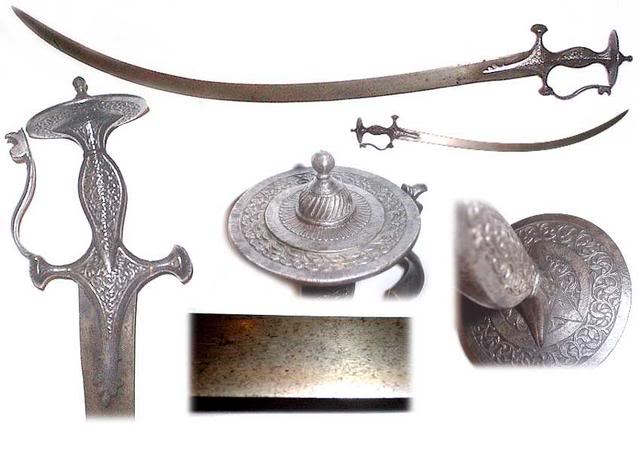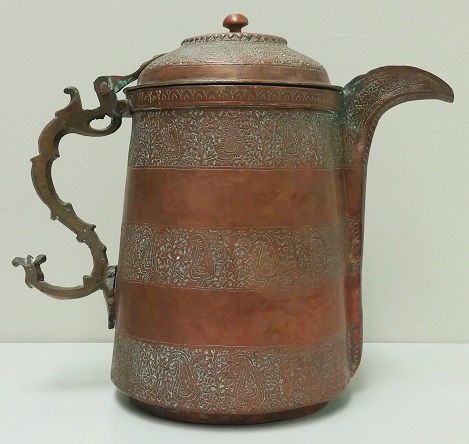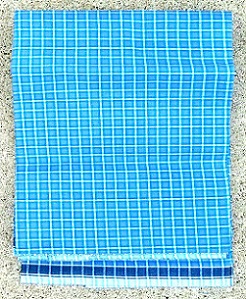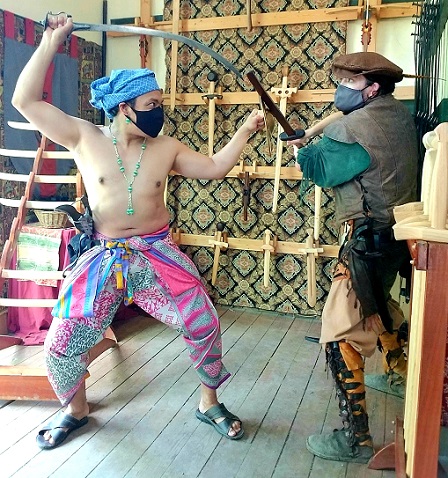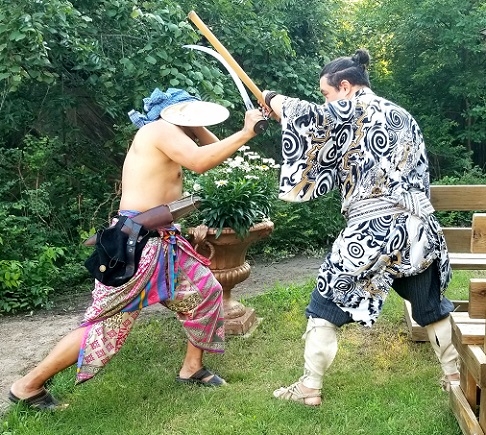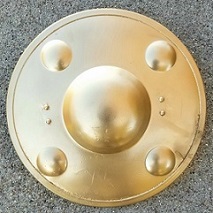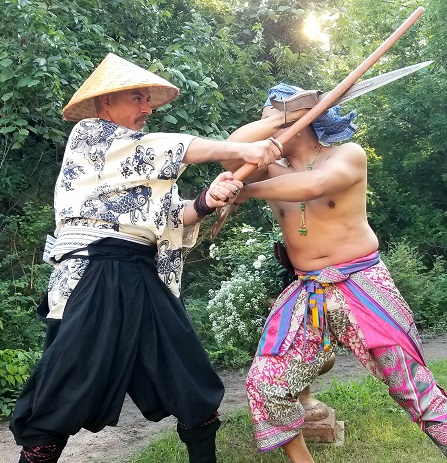Subject: chaver warrior
Culture: Nayar
Setting: late Vijayanagara empire, south India 16thc
Context (Event Photos, Primary Sources, Secondary Sources, Field Notes)
* Luijendijk 2005 p103
"chaver: member of a class of kalari-warriors who pledged to die in the service of their overlord"
Costume
* Crowley 2015 p63 (describing the Portuguese arrival at Calicut, 1498)
"To the groggy sailors, the sight of the reception committee was alarming: a large number of men, some with big beards and long hair, their ears pierced with glinting gold, many naked to the waist and holding drawn swords. These men were Nayars, members of the Hindu warrior caste, sworn from youth to protect their king until death."
* Pathak 2006 p55
"The paintings at Lepakshi and the stone and bronze sculptures of the Vijayanagara period depict God with a crown, lots of jewellery, and a very ornamental lower garment and sash. On the ceiling of the Virupaksha Temple at Hampi, paintings depict Sage Vidyaranya's procession, where palanquin bearers and standard holders are wearing a tunic, a short dhoti, a kamarband and a turban."
* Luijendijk 2005 pvii
"Kalarippayat does not have a hierarchical system, as in the Japanese and other Oriental martial arts. Teachers and students alike have always dressed only in a loincloth, covering the rest of their bodies with oil. This dress code is necessitated in part by the use of weapons. A fully dressed practitioner can easily catch his clothing on a knife or sword, which can be dangerous, especially when the student is not entirely familiar with the weapon he is using. There is also an ideological reason for the dress code: in kalarippayat there is no distinction between students; nor is there any distinction between student and teacher. This has a lot to do with the fact that a kalarippayat gym is regarded by the people of Kerala as a temple, a place where God is present. In the eyes of God, as the Keralan people say, everyone is equal."
Katar
* Elgood 2004 p147
"Katars of this form can be seen in sixteenth-century sculpture in mandapas at Śrīraṅgam, Vellore and elsewhere. The four-cusped arch design at the base of the blade and the rather austere style of the guard are similar in style to Muslim architecture, which began to be adopted by the Hindu court in the Royal Centre at Hampi in the mid-sixteenth century. Vijayanagara architecture styles, including Muslim elements, in the sixteenth century have been described by Michell as 'an imperial style reserved for buildings connected with the king, court and army.' Thte projecting balconies facing inwards in the building, known as the Queen's Bath, have a cusped design of this form. The design rarely appears in Hindu art and in this instance reflects the architecture of Bijāpur. Cusped arches of this type also appear on the Gagan Mahal at Penukŏṇḍa, capital of Chandragiri. This helps to identify when the style was in vogue though it should be noted that Heras cites plates stating that Krishṇadevarāya ruled the empire from there. These katars are usually covered in gold or silver foil and enough survive to indicate clearly that this was the standard form of decoration. ...
* Elgood 2004 p250
"Sixteenth- and early seventeenth-century Hindu Kaṭārs tend to have longer triangular blades than those of the Mughals. The southern katars of this date often utilise cut-down European blades. Another common characteristic is fine grooves running the length of the blade to the point covering all the surface, found also on spearheads from the same region. These are sixteenth-century Indian blades and can be seen accurately carved in stone in the Śeshagirirāyar Maṇḍapa, Śrīraṅgam and in other sixteenth century Vijayanagara maṇḍapas. Sculpture shows these were consistently used in battle in pairs, one in each hand."
* Stone 1934 p345
"Many katars have guards for the back of the hand. Most are solid plates but many are elaborately pierced, a form evidently suggested by the pierced shells and guards of the Portuguese rapiers. Some of the Tanjore katars have the most complicated and beautiful hand guards."
* Stone 1934 p479
"PAISCUSH. A guarded katar, that is, one with a plate guard protecting the back of the hand." [references omitted]
Saber
* Elgood 2004 p75
"[T]he southern Hindus used talwars with knuckle-bows, hemispherical pommels and with the grip at an angle to the blade (as distinct from the northern talwar where the line of the blade is continued in the grip); the southern blade also has a different shape as can be seen in sixteenth-century sculpture."
Shield
*
"
Bottle
*
"
